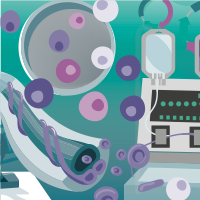Considerations on impact of raw material variability in gene therapy manufacturing: applying lessons learned from biologics manufacturing
Cell & Gene Therapy Insights 2020; 6(2), 407–414
10.18609/cgti.2020.024
As the number of cell and gene therapy products grow it is important to consider aspects of gene therapy production process robustness, and one key characteristic is the variability of incoming raw materials. Understanding and controlling raw material variability is an important aspect of process development, characterization and commercialization. In the recent history of therapeutic protein production with cell cultures, many problems caused by raw material variability were only discovered post-commercialization, and failure to understand and address key raw material variability during process development led to costly underperformance and batch failure. In this article, we consider some known sources of raw material variability and specifically, those that have been known to impact cell culture production processes. Trace element impurity variation, particularly iron, copper, manganese and zinc, are candidates for high process impact risk. Compositional variation of undefined material (i.e., fetal bovine serum [FBS]) is another important potential failure mode. This includes known nutrient components, such as amino acids and cholesterol, as well as unidentified components, such as growth factors. Cell and gene therapy processes also include relatively new materials for cell culture, such as plasmid DNA and the transfection agent polyethyleneimine, the understanding of the variability of which must be considered.
